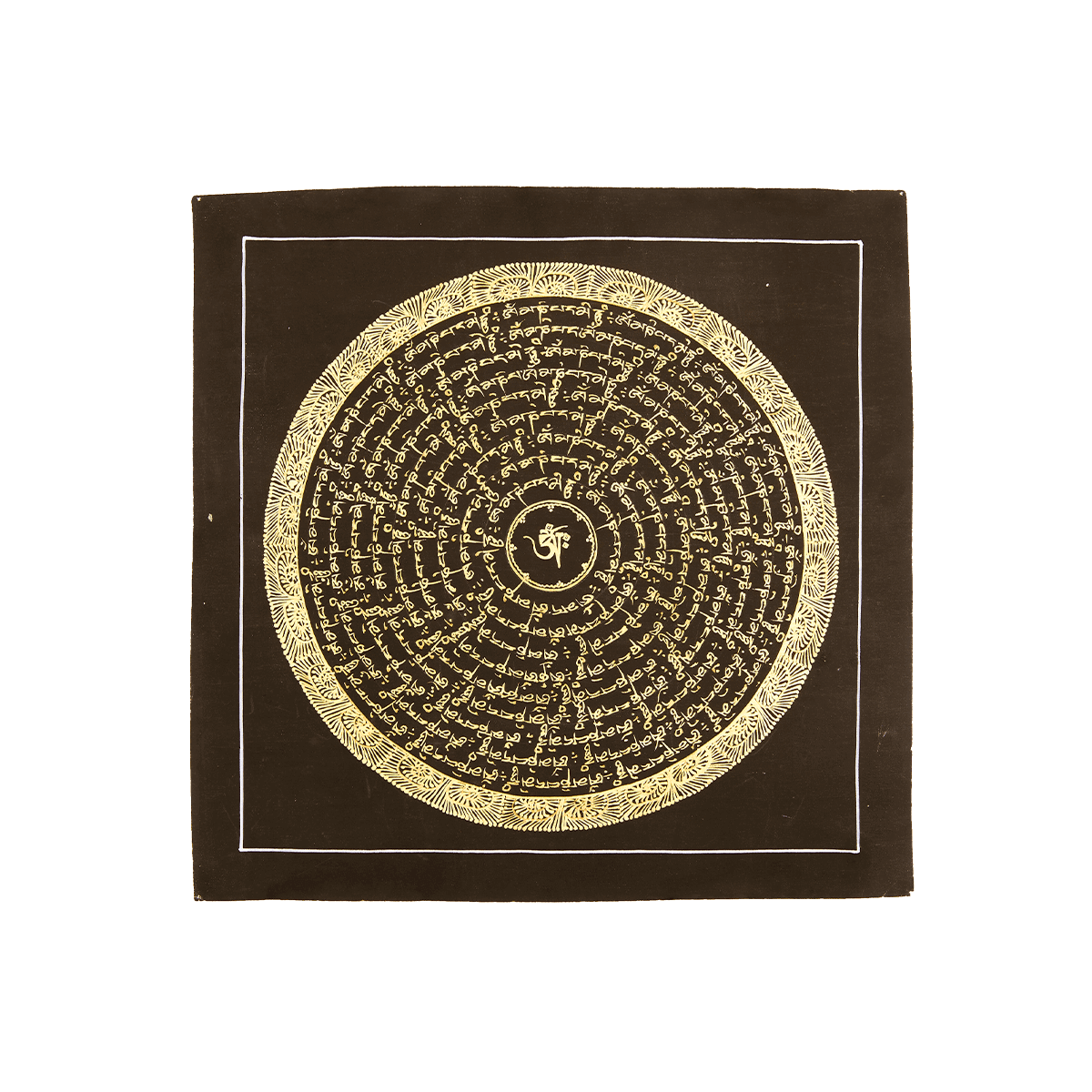
Exploring the Timeless Beauty of Mandalas: Origins, Symbolism and their Presence in Furniture Design
Let’s explore the origin of mandalas, their cultural significance across regions and their symbolic meaning. We can bring their special energy into our homes through handmade furniture and home accessories decorated with mandala designs.
In the world of art and design, mandalas have captured the human imagination for centuries. Their cultural and spiritual significance may vary over time and continents, but each mandala has a rich history that connects us to a positive vibration of amazing energy. Intricately carved geometric or natural patterns, often associated with meditation and mindfulness, have transcended their roots and have become timeless symbols of harmony and balance. In this blog article, we trace the origins of mandalas, exploring their symbolic motifs and discovering how they manifest in our homes in the modern world.
Origins of the Mandala
The word “mandala” has its roots in Sanskrit, the ancient language of Hinduism. In its essence, mandala translates to “circle,” representing the universe and the interconnectedness of all life. While mandalas are often associated with Hindu and Buddhist traditions, these mesmerizing patterns have emerged independently in various cultures across the globe.
In Hinduism, mandalas are used as spiritual symbols in rituals and ceremonies, representing the cosmos and the cyclical nature of existence. In Buddhism, monks create intricate sand mandalas as a form of meditation, only to dismantle them upon completion, emphasizing the impermanence of life.
Main Motifs in Mandalas
Mandalas feature a variety of motifs, each carrying its own unique symbolism. Common elements include circles, squares, triangles, and lotus flowers. The circle, in particular, is a central motif that represents unity, wholeness, and the cyclical nature of life.
The lotus flower, with its roots in the mud and petals reaching towards the sun, symbolizes purity, enlightenment, and spiritual rebirth. Geometric shapes like squares and triangles embody stability and balance, contributing to the overall harmony of the mandala.
Mandala types you may encounter
Mantra Mandala
A Mantra Mandala is a unique expression of sacred sound in visual form. Centered around a specific mantra, a sacred utterance or chant, this mandala aims to embody the vibrational essence of the chosen mantra. The repetition of the mantra within the mandala’s design is believed to invoke spiritual energies and amplify the meditative experience. The visual representation of the mantra within the mandala serves as a powerful tool for concentration and contemplation, fostering a connection between the practitioner and the divine vibrations embedded in the sacred words.





Lotus Flower Mandala Design
The Lotus Flower Mandala encapsulates the profound symbolism associated with the lotus in various spiritual traditions. Emerging from the mud and unfolding its petals toward the sun, the lotus symbolizes purity, enlightenment, and spiritual rebirth. In mandala form, the lotus flower is often placed at the center, surrounded by intricate geometric patterns. The layers of the lotus represent different stages of spiritual awakening, making this mandala a powerful emblem of growth, renewal, and the journey toward transcendence. Beyond its spiritual significance, the Lotus Flower Mandala’s aesthetic beauty has made it a popular motif in art, meditation, and, as mentioned earlier, even in furniture design.





Kalachakra Mandala
The Kalachakra Mandala, rooted in Tibetan Buddhism, holds profound significance as a symbol of time and cycles. Comprising intricate geometric patterns and vibrant colors, this mandala represents the celestial palace of the Kalachakra deity, embodying the interplay of time, space, and the ever-changing nature of existence. The Kalachakra Mandala is often used in rituals and meditative practices associated with the Kalachakra Tantra, fostering a deep understanding of cosmic cycles and spiritual transformation.




Buddha Life Mandala
The Buddha Life Mandala serves as a visual narrative of the life and teachings of Siddhartha Gautama, the historical Buddha. Through a series of concentric circles or squares, each layer depicts key events in the Buddha’s life, from his birth to enlightenment and eventual passing into Nirvana. These mandalas serve as contemplative aids, guiding followers through the stages of the Buddha’s journey and encouraging reflection on the path to enlightenment. Each element within the mandala holds symbolic significance, contributing to a holistic representation of the Buddha’s transformative existence.


Mandalas in Furniture and Home Design
The fascination with mandalas is not limited to spiritual practices and art. Mandala motifs have also found their way into furniture design and home decoration, adding mystical and cultural richness to interiors.
Tables, chairs and cabinets decorated with mandala, geometric or floral motifs bring a sense of balance and tranquility to living spaces. The intricate designs are often carved into wood, creating functional works of art that serve both aesthetic and practical purposes.
The use of mandala motifs in furniture design is not limited to a specific cultural or religious context. Designers are drawing inspiration from the universal appeal of mandalas and incorporating them into a variety of styles – from traditional to modern, from art deco to minimalism, every design style is represented.





Mandalas with their ancient roots and timeless appeal continue to fascinate and inspire people around the world. In addition to their traditional role in spiritual practices, these simple and captivating motifs have also found their way into contemporary design, adding cultural richness and symbolism to furniture. As we integrate mandalas into our living spaces, we both celebrate the beauty of these geometric wonders, and bring a sense of balance and harmony into our homes. Whether in meditation or in the midst of daily life, the subtle vibrations of mandalas remind us that everything in the universe is interconnected and the beauty that lies in the cycle of existence is eternal.
Sources: https://hu.wikipedia.org/wiki/Homokmandala,